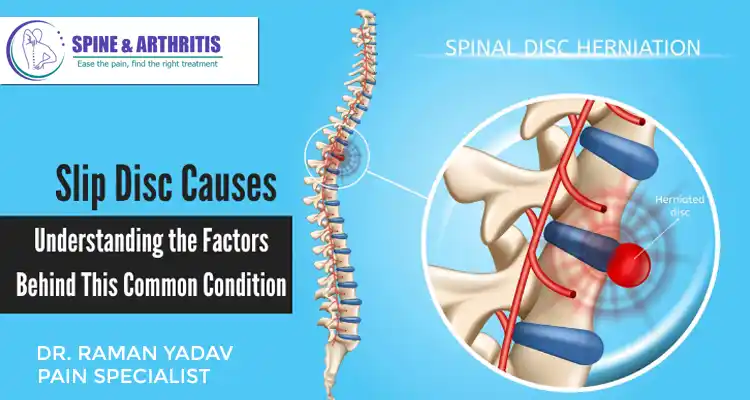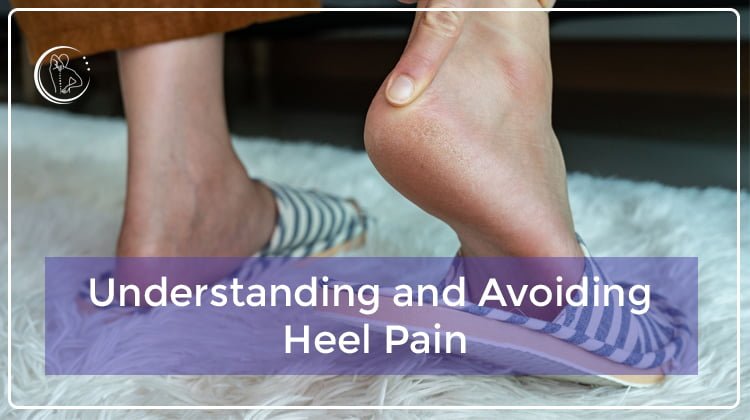One of our goals at Spine & Pain Clinics of Gurgaon is patient education. In the Pain Conditions section you can find articles about various pain conditions that include important information about symptoms, diagnosis, and treatment options available. Learning about your health care condition is a good place to start in order to live well in spite of a chronic pain problem.
- 1 Low Back Pain
- Low back pain is a prevalent condition that affects millions of individuals worldwide. It can range from mild discomfort to severe, debilitating pain that impacts daily life. Understanding the causes and effective management of low back pain is crucial for improving quality of life and preventing long-term complications.
Causes of Low Back Pain Low back pain can stem from various factors, including:
Muscle strain: Often due to heavy lifting or sudden movements.
Poor posture: Prolonged sitting or standing incorrectly.
Degenerative conditions: Such as osteoarthritis or disc degeneration.
Injuries: Resulting from accidents or trauma.
- 2 Neck Pain
- Neck pain is a common ailment affecting a significant portion of the population globally. It can range from mild discomfort to severe pain that interferes with daily activities. Understanding the causes, symptoms, and effective management of neck pain is essential for alleviating discomfort and preventing long-term issues.
Causes of Neck Pain Neck pain can arise due to several factors, including:
Muscle strain: Often from poor posture, prolonged sitting, or sudden movements.
Degenerative conditions: Such as cervical spondylosis or osteoarthritis.
Injuries: Such as whiplash from car accidents or sports injuries.
Herniated discs: Pressure on spinal nerves due to disc bulges
- 3 Sciatica Pain
- Sciatica pain refers to pain that radiates along the path of the sciatic nerve, which branches from your lower back through your hips and buttocks and down each leg. This condition typically affects one side of your body and can vary from mild discomfort to severe pain that makes it difficult to sit, stand, or walk. Understanding the causes, symptoms, and effective management of sciatica pain is crucial for improving quality of life and preventing long-term complications.
Causes of Sciatica Pain Sciatica pain can be caused by various conditions, including:
Herniated or bulging discs: Pressure on the sciatic nerve due to disc herniation or degeneration.
Spinal stenosis: Narrowing of the spinal canal that puts pressure on the nerve roots.
Spondylolisthesis: Forward displacement of a vertebra, leading to nerve compression.
Piriformis syndrome: Irritation of the sciatic nerve by the piriformis muscle in the buttocks.
Trauma or injury: Such as a fall or accident that compresses the nerve.
- 4 Neuropathic Pain or Nerve-related pain
- Neuropathic pain, also known as nerve-related pain, is a complex and often chronic condition resulting from damage or dysfunction of the nervous system. Unlike nociceptive pain, which arises from tissue damage, neuropathic pain involves abnormal signals sent to the brain. This type of pain can be challenging to manage but understanding its causes, symptoms, and effective treatments is essential for improving quality of life.
Causes of Neuropathic Pain Neuropathic pain can be caused by various conditions and factors, including:
Peripheral neuropathy: Damage to peripheral nerves, often due to diabetes, infections, or traumatic injuries.
Central nervous system disorders: Such as multiple sclerosis or stroke.
Traumatic nerve injury: Following accidents or surgeries.
Compression of nerves: Due to conditions like carpal tunnel syndrome or herniated discs.
Chemotherapy or radiation therapy: Which can damage nerves as a side effect of treatment.
- 5 Cancer Pain
- Cancer pain is a complex symptom experienced by many individuals diagnosed with cancer. It can vary widely in intensity, duration, and location depending on the type and stage of cancer. Managing cancer pain effectively is crucial for improving the quality of life for patients undergoing treatment and living with cancer..
Causes of Cancer Pain Cancer pain can arise from various sources, including:
Tumor growth: Direct pressure on organs, tissues, or nerves.
Cancer treatments: Such as surgery, chemotherapy, radiation therapy, or immunotherapy.
Metastasis: Spread of cancer to bones, nerves, or organs.
Inflammation: Caused by cancer-related changes in the body.
- 6 Trigeminal Neuralgia
- Trigeminal Neuralgia (TN) is a chronic pain condition affecting the trigeminal nerve, which is responsible for sensation in the face. Individuals with TN experience sudden, severe, stabbing pain along the nerve, typically on one side of the face. This pain can be triggered by even mild stimulation such as brushing teeth, chewing, or even a gentle breeze. The condition can significantly impact daily life due to its unpredictable and excruciating nature.
Causes of Trigeminal Neuralgia Trigeminal Neuralgia is often caused by compression of the trigeminal nerve by a nearby blood vessel, leading to nerve irritation and pain. Other potential causes include:
Multiple sclerosis: which damages the myelin sheath protecting nerves.
Tumors: pressing on the nerve.
Injury to the nerve: due to surgery or trauma.
- 7 Complex Regional Pain syndrome
- Complex Regional Pain Syndrome (CRPS), formerly known as Reflex Sympathetic Dystrophy (RSD), is a chronic pain condition characterized by intense and prolonged pain that may affect an arm, leg, hand, or foot. This syndrome typically develops after an injury, surgery, stroke, or heart attack, although sometimes there may be no clear precipitating event. CRPS is believed to involve malfunction of the nervous system, causing abnormal pain signals and sensory changes.
Causes of Complex Regional Pain Syndrome
Injury or trauma to a limb, such as fractures, sprains, or surgery.
Nerve damage or dysfunction.
Surgery involving nerves or blood vessels.
Infections or other medical conditions.
- 8 Soft-tissue Pain (Ligaments, Tendons etc)
Soft tissue pain refers to discomfort or pain originating from structures such as ligaments, tendons, muscles, and fascia. These tissues play crucial roles in joint stability, movement, and overall body function. When these tissues are injured or overused, they can become a source of chronic pain, affecting daily activities and quality of life.
Causes of Soft Tissue Pain Soft tissue pain can arise from various factors, such as:
Acute trauma: Sports injuries, falls, or accidents causing sudden tissue damage.
Overuse:Repetitive motions in sports, work-related activities, or hobbies.
Poor posture: Prolonged sitting or standing in incorrect positions.
Age-related changes: Degenerative conditions affecting tendon and ligament integrity.
Inflammatory conditions: Autoimmune diseases or infections affecting soft tissues.
- 9 Spondylosis
Spondylosis refers to a condition characterized by the degeneration of the spine, specifically the joints and discs between vertebrae. This degeneration is typically associated with aging and can result in symptoms such as pain, stiffness, and decreased mobility in the affected area of the spine. Spondylosis can occur anywhere along the spine but is most common in the cervical (neck) and lumbar (lower back) regions. Factors such as age, genetics, and lifestyle (including factors like smoking and obesity) can contribute to the development of spondylosis. Treatment often focuses on managing symptoms through pain relief, physical therapy, and in severe cases, surgery may be necessary
- 10 Shoulder Pain
Shoulder pain refers to discomfort or pain felt in the shoulder joint or around the shoulder area. It can range from mild to severe and may be caused by various factors, including injuries, overuse, inflammation, or degenerative conditions affecting the muscles, tendons, ligaments, or bones of the shoulder.
Common causes of shoulder pain include:
Rotator Cuff Injuries: Tears, strains, or inflammation of the rotator cuff muscles and tendons, which help stabilize and move the shoulder joint.
Shoulder Impingement Syndrome:Compression of the tendons or bursa (fluid-filled sacs) around the shoulder joint, often due to repetitive overhead movements.
Frozen Shoulder (Adhesive Capsulitis): Stiffness and pain in the shoulder joint due to thickening and tightening of the shoulder capsule.
Shoulder Arthritis: Osteoarthritis or rheumatoid arthritis affecting the shoulder joint, causing pain, stiffness, and decreased range of motion.
Shoulder Instability: Dislocation or looseness of the shoulder joint, which can cause pain and a feeling of shoulder "giving way."
- 11 Knee or Joint Arthritis
Knee arthritis, or joint arthritis affecting the knee, refers to a condition where the cartilage that cushions the joints wears down over time, causing pain, stiffness, and reduced mobility. There are several types of arthritis that can affect the knee:
Osteoarthritis: This is the most common type of arthritis that affects the knee joint. It occurs due to wear and tear on the cartilage over time, leading to pain, swelling, and stiffness.
Rheumatoid Arthritis: An autoimmune condition where the body's immune system attacks the synovium (lining of the joint), causing inflammation, pain, and eventually joint damage.
Post-Traumatic Arthritis: Develops after an injury to the knee, such as a fracture or ligament tear, which damages the cartilage and leads to arthritis over time.
Other Types: Less common types of arthritis affecting the knee include gout, pseudo gout, and infectious arthritis (caused by an infection).
- 13 Headaches & Migraines
Headaches and migraines are common conditions characterized by pain or discomfort in the head, often causing significant discomfort and interference with daily activities. Here's a breakdown of each:
Headaches:
Tension Headaches: These are the most common type and typically present as a dull, aching pain on both sides of the head, often associated with muscle tension in the neck or scalp.
Migraine Headaches: Migraines are intense headaches that can cause throbbing or pulsating pain, often on one side of the head. They are often accompanied by symptoms such as nausea, vomiting, sensitivity to light or sound, and visual disturbances (aura).
Cluster Headaches: Cluster headaches are severe headaches that occur in cyclical patterns or clusters, usually on one side of the head. They are often associated with symptoms such as eye redness, tearing, or nasal congestion.
Sinus Headaches: These headaches are associated with sinusitis or sinus infection, causing pain and pressure in the forehead, cheeks, or around the eyes.
Migraines:
- Throbbing or pulsating pain, often on one side of the head.
- Sensitivity to light (photophobia), sound (phonophobia), or smells.
- Nausea and vomiting.
- Visual disturbances (aura), such as flashes of light, blind spots, or zigzag lines.
- 14 Fibromyalgia
Fibromyalgia is a chronic condition characterized by widespread musculoskeletal pain, tenderness in specific areas of the body, fatigue, and often accompanied by sleep disturbances, mood issues, and cognitive difficulties. It is considered a disorder of pain processing where the brain and nerves amplify painful sensations.
Common causes of Fibromyalgia include:
Genetics: It tends to run in families, suggesting a genetic predisposition.
Infections:Some illnesses or infections may trigger or aggravate fibromyalgia.
Physical or Emotional Trauma: Post-traumatic stress disorder (PTSD) or injuries may increase the risk of developing fibromyalgia.

You can also book an appointment over phone by calling us on +91 - 8800433046 or

- SpineArthritis
- Post Comment
Facts To Know About Spine Specialists In Gurgaon
In the bustling…
Read More

- 1
- 2




